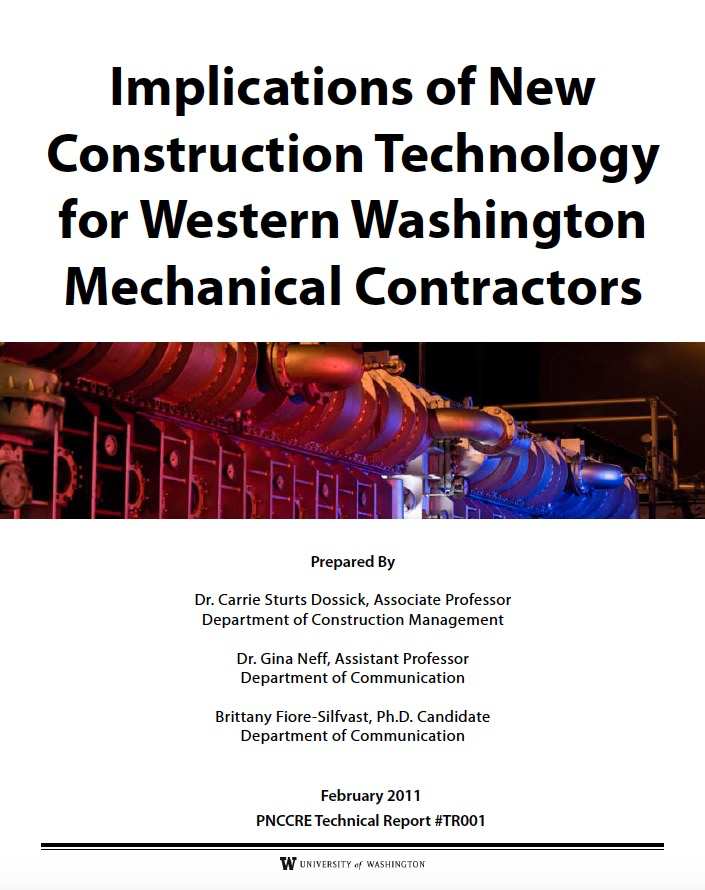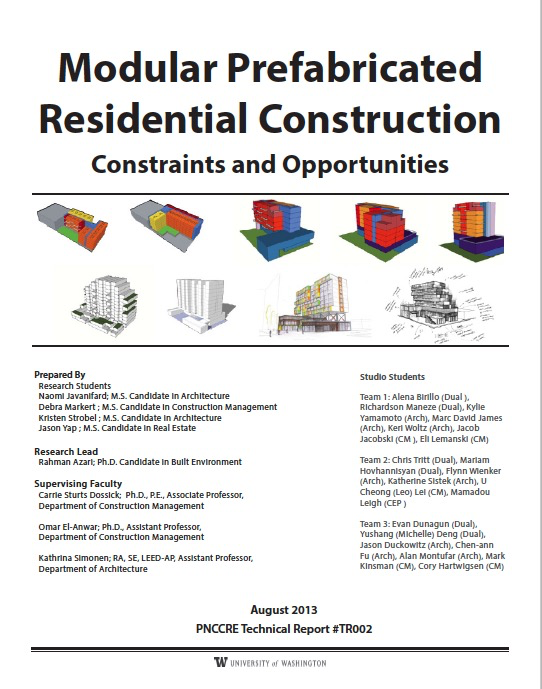This research was supported through generous funding from the Mechanical Contractors Association of Western Washington, the University of Washington Royalty Research Fund, the College of Built Environments and the Departments of Construction Management and Communication. This material is based upon work supported by the National Science Foundation under Grant No. 0823338. Any opinions, findings, conclusions or recommendations expressed in this material are those of the author(s) and do not necessarily reflect the views of the National Science Foundation.

Building Information Models (or “BIM”) represent buildings in three-dimensional computer models and associated databases. BIM is at once a visualization tool for depicting the building plans in 3-D, a database of building components that can be queried and filtered, and a collaborative communication tool for linking together various models, datasets and ways of looking at the building. Proponents of BIM technologies promise that the use of the tools will lead to more efficient building, closer collaboration and coordination between subcontractors, and clearer directions for labor resulting in fewer changes and fewer field issues.
The purpose of this report is three-fold. First we describe emerging applications of BIM tools in mechanical design and construction, and establish how these BIM practices support and challenge managers and workers who fabricate and install building systems. Then, we identify the implications of this technology for communication and collaboration among designers, managers and builders, and analyze existing practices in the Architecture, Engineering & Construction (AEC) industries to predict emerging trends in BIM use. Finally, we propose recommendations for mechanical contractors to improve the efficiency and efficacy of their implementations of BIM.
For this study, we analyzed data from our ongoing study of BIM practices at three building construction projects in the Pacific Northwest and from interviews with 125 AEC professionals across the United States. Specifically for this report, with the support of the Mechanical Contractors Association of Western Washington, we interviewed additional mechanical contractors for a total of 21 specialty contractor interviews.
Findings
We find that mechanical contractors are well positioned for the emerging changes in the AEC industry. The ways in which designers and builders manage information and data is challenging existing roles, organizational divisions, and work practices throughout the project process. We have identified four key emerging trends:
- There is an increasingly important role for technologists on project teams
- Mobile computing technologies link the field to the office
- The line is blurring between design and construction
- BIM is enabling and expanding prefabrication. Recommendations
Based on the analysis outlined in this report, we offer six recommendations: • Strengthen teams
- Cultivate technology leaders
- Strategize for multiple “BIMs”
- Design environments not programs
- Quantify current practices
- Remember technology is an occasion for change
Communication among architects, engineers, the general contractor, and mechanical and other specialty contractors could be improved through clearer connections among all project participants. For this to occur, strat
